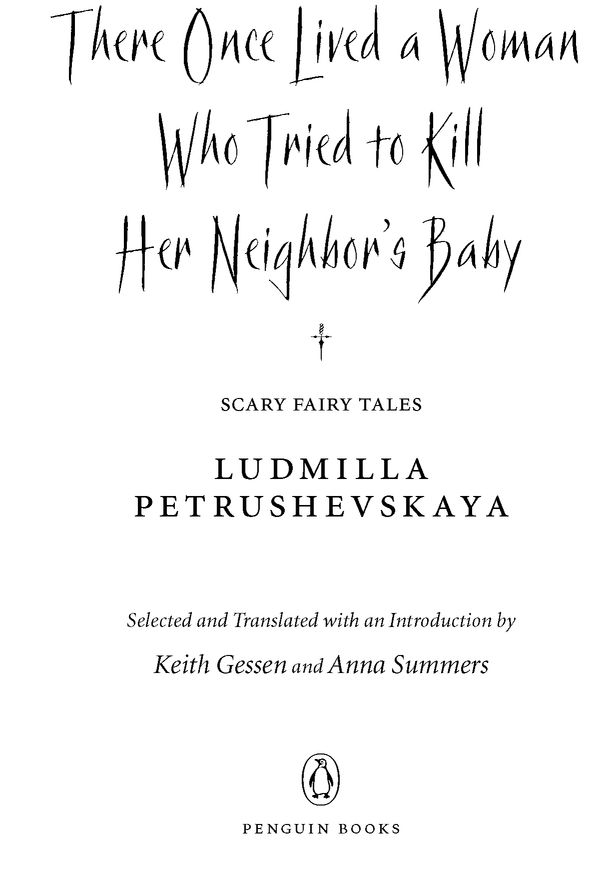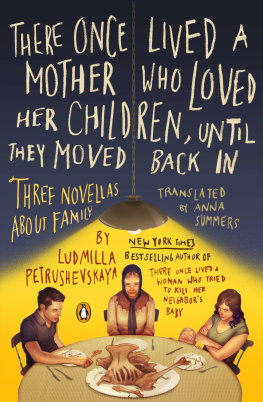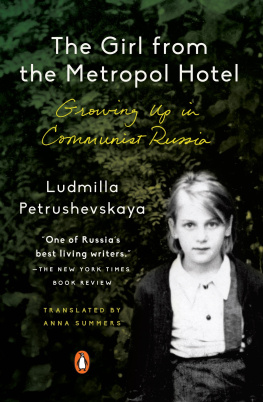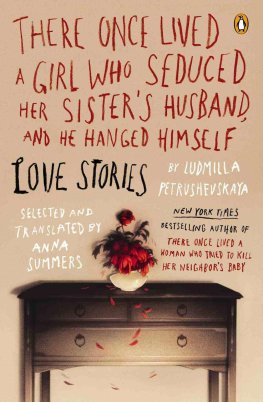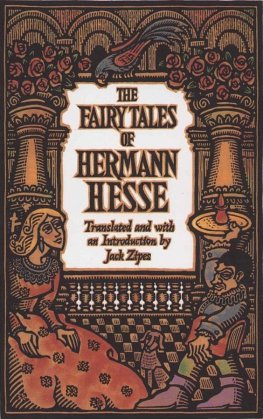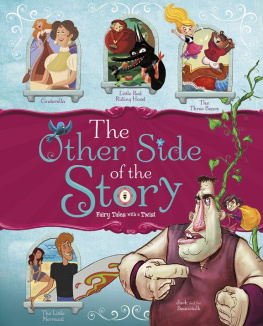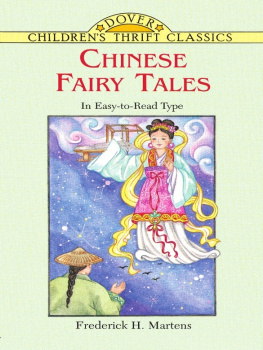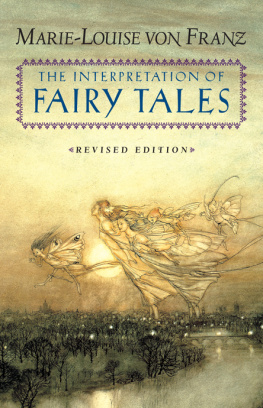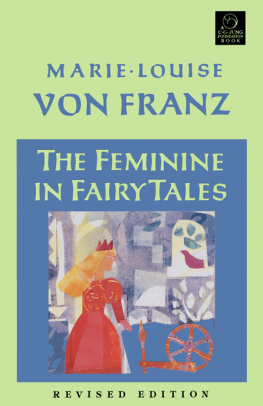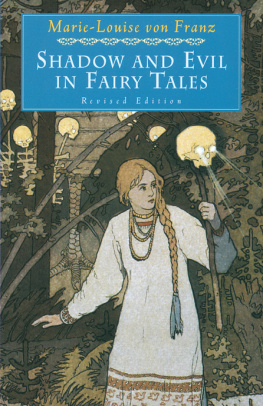Table of Contents
PENGUIN BOOKS
There Once Lived a Woman Who Tried to Kill Her Neighbors Baby
LUDMILLA PETRUSHEVSKAYA was born in 1938 in Moscow, where she still lives. She is the author of more than fifteen collections of prose, including the short novel The Time: Night shortlisted for the Russian Booker Prize in 1992, and Svoi Krug, a modern classic about the 1980s Soviet intelligentsia. The progenitor of the womens fiction movement in modern Russian letters, she is also a playwright whose work has been staged by leading theater companies all over the world. In 2002 she received Russias most prestigious prize, The Triumph, for lifetime achievement.
KEITH GESSEN is the author of All the Sad Young Literary Men and an editor and founder of the literary magazine n+1. He has written about Russian literature for The New Yorker and The New York Review of Books. His translation of Voices from Chernobyl won the National Book Critics Circle Award for Nonfiction in 2005.
ANNA SUMMERS holds a doctorate in Slavic literature from Harvard. She lives in Cambridge, Massachusetts.
Introduction
IN ONE OF THE SHORT MEMOIRS SHES WRITTEN OVER THE years, Ludmilla Petrushevskaya described a trip she took to Lithuania in 1973. Though part of the USSR, Lithuania was a troublesome republicwealthier and more European than the rest of the empire, it was not a place a troublesome Soviet writer could go on official business. But Petrushevskaya wanted to make a pilgrimage to Thomas Manns summer home (on the Baltic coast) and also meet with a literary editor, who might not knowVilnius was far from Moscowthat her writing was banned in Russia. She invented a reason to visit a Russian city near the border, then hitchhiked the rest of the way. The year before, Petrushevskayas first husband had died at the age of thirty-two after a long illness; for the last six years of his life he was paralyzed.
The trip as she describes it is trying, difficult, exhilaratingbut most of all it is a break. Wandering the early morning streets of Vilnius, she meets a woman named Yadviga, who takes her in. The women exchange stories. Yadviga is also a widow: She moved to the capital because her house had burned down while she was out one morning, while her daughter, a grandson, and her husband remained inside. In return, Petrushevskaya tells the widow about her husband. At the end of his life, he was so thin he looked like Jesus Christ on the cross. They cry together. Then its time to go. I take the tram out of town until I reach the highway, Petrushevskayas memoir concludes. Theres not enough money for a train. Freedom. A deafening freedom after six years of hospitals and steady fighting. Ten more days of freedom before I return to my everyday life, hold in my arms my child, my savior, my treasure. Yadviga remains alone, the dry branch of a burned tree. A month later, the Lithuanian editor sends her the handsome sum of thirty-two rubles and the Lithuanian womens magazine where two of Petrushevskayas stories had appeared in translation.
In official Soviet literature, Petrushevskaya would remain out of favor for years to come. Her stories about the lives of Russian women were too dark, too direct, and too forbidding. Even her fairy tales seemed to have an edge of despair to them. (Whos Afraid of Ludmilla Petrushevskaya? was the title of a 1984 essay in an emigre literary journal which asked in part why an author who was so far from explicitly political themes should be banned.) The same editor who first published Solzhenitsyn in the Soviet Union in Novy Mir in the early 1960s met with Petrushevskaya in 1968 to tell her that, in her case, there was no hope. She did, however, write plays, and these fared betterone of her most radical plays, Love, comparable in style and spirit to Harold Pinters early work, premiered at the Taganka Theater in 1974but often these productions too were shut down. Petrushevskaya scraped by with television and radio scripts, occasional journalism, editing, and translations.
Finally, the Soviet Union began to fall apart. A group of writers who had never been allowed in print before began to be published in earnest, with large circulations. The New Robinson Crusoes, one of Petrushevskayas most famous stories (included in this collection), was published in Novy Mir alongside Solzhenitsyns Gulag Archipelago. The appearance in 1987 of her first collection, Immortal Love, which gathered her grim, realist tales of Soviet life, many of them in the form of acidic female monologues, was a major cultural event. Petrushevskaya was then forty-nine. From that point on, she was officially a major figure in Russian letters, unrivaled in the scope and diversity of her talent. She has won numerous awards and her stories have entered university curricula in Russia and in the West. Her seventieth birthday in 2008 was a government-sponsored celebration on a national scale. With the death of Solzhenitsyn, it would not be an exaggeration to say that Petrushevskaya is Russias best-known living writer.
She is still also a very controversial one: Many Russian readers cannot forgive the unremitting bleakness (even if it was always mixed with profound sympathy and hope) of her early work; others cannot accept that a writer who has existed so far outside the ordinary conventions of literary lifewho once produced a nearly epic-length poem called Karamzin satirizing Karamzins 1804 story Poor Liza; and who has recently been performing a one-woman cabaret while wearing an enormous hathas achieved classic stature. The one expression that unquestionably fits her, a Russian critic wrote recently in Novy Mir, is an English one: larger than life.
This collection represents a selection from one vital side of Petrushevskayas oeuvre: Her mystical and fantastical tales. They are organized into four sections according to the cycles in which Petrushevskaya has arranged them in her Russian books. Songs of the Eastern Slavsdark, surreal vignettes told in the manner of urban folk tales; Allegories, including two apocalyptic stories, some of Petrushevskayas best known, about the collapse of a social-political order; Requiems, an older and gentler cycle that explores human relationships under duress and after death; and, finally, Fairy Talesor real fairy tales, as Petrushevskaya calls them. From over a hundred stories we chose pieces with a common fantastic or mystical element, leaving for future translations Petrushevskayas early realistic stories; her central masterpiece, the novel Time Night; and her novellas and dramatic writings. The stories in this volume were composed over the last thirty-plus years, but many of them are from the past decade. Most of them have never appeared in English.
The cycles are written in very different keys, making them difficult to classify, but a subtitle Petrushevskaya used for one of her longer fantastic tales, The Possibilities of Menippea, points to a common source. The ancient Greek Menippus once visited Hades, and since then the satirical genre named after him has often been said to include visits to the literal or social underworld. These visits are called nekyia, a night journey, after Homers term in the Odyssey. Classic nekyia describe travels to the underworld and dialogues with the dead (in the original nekyia, Odysseus drinks human blood so as to talk with the dead); modern


